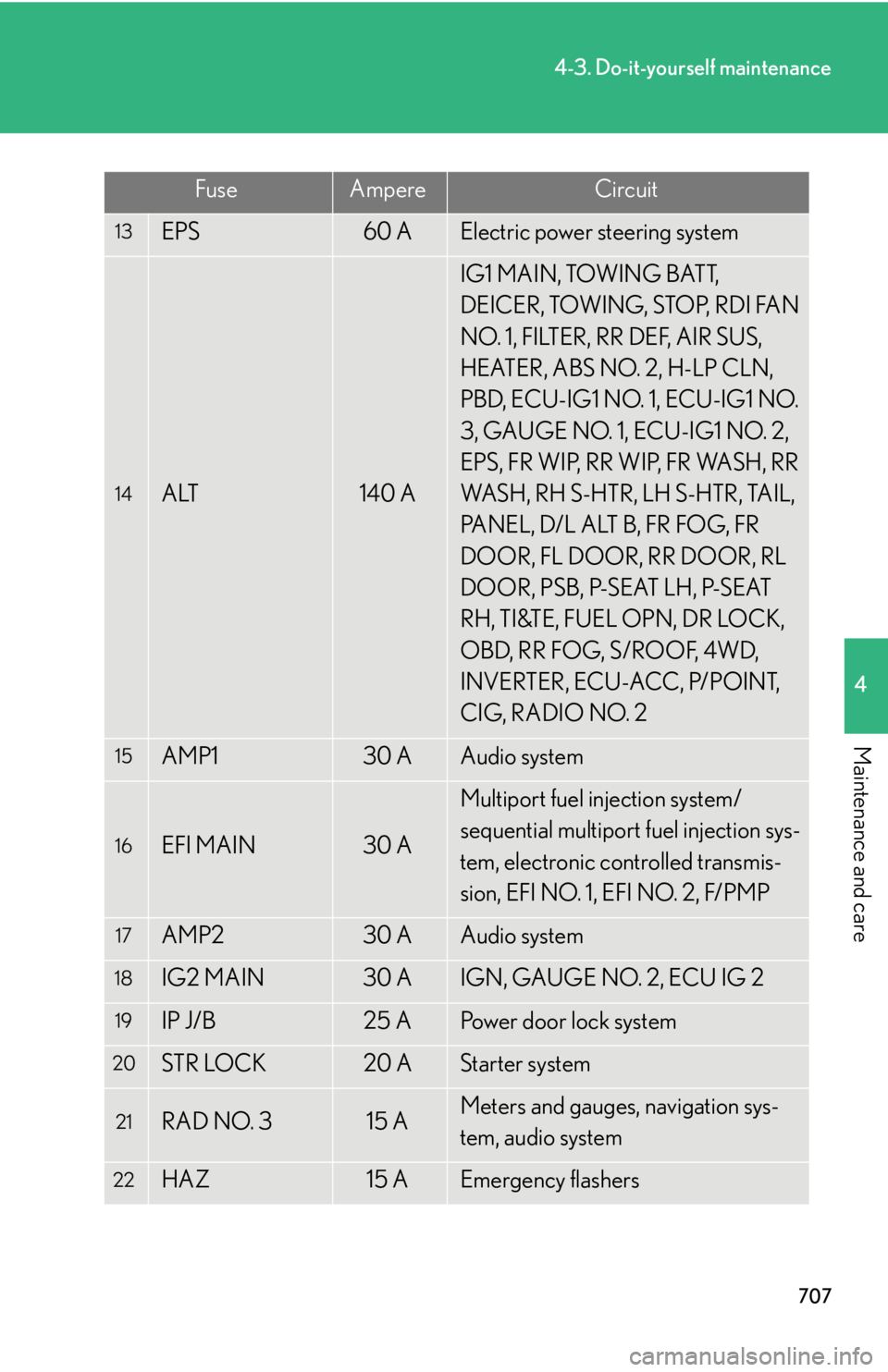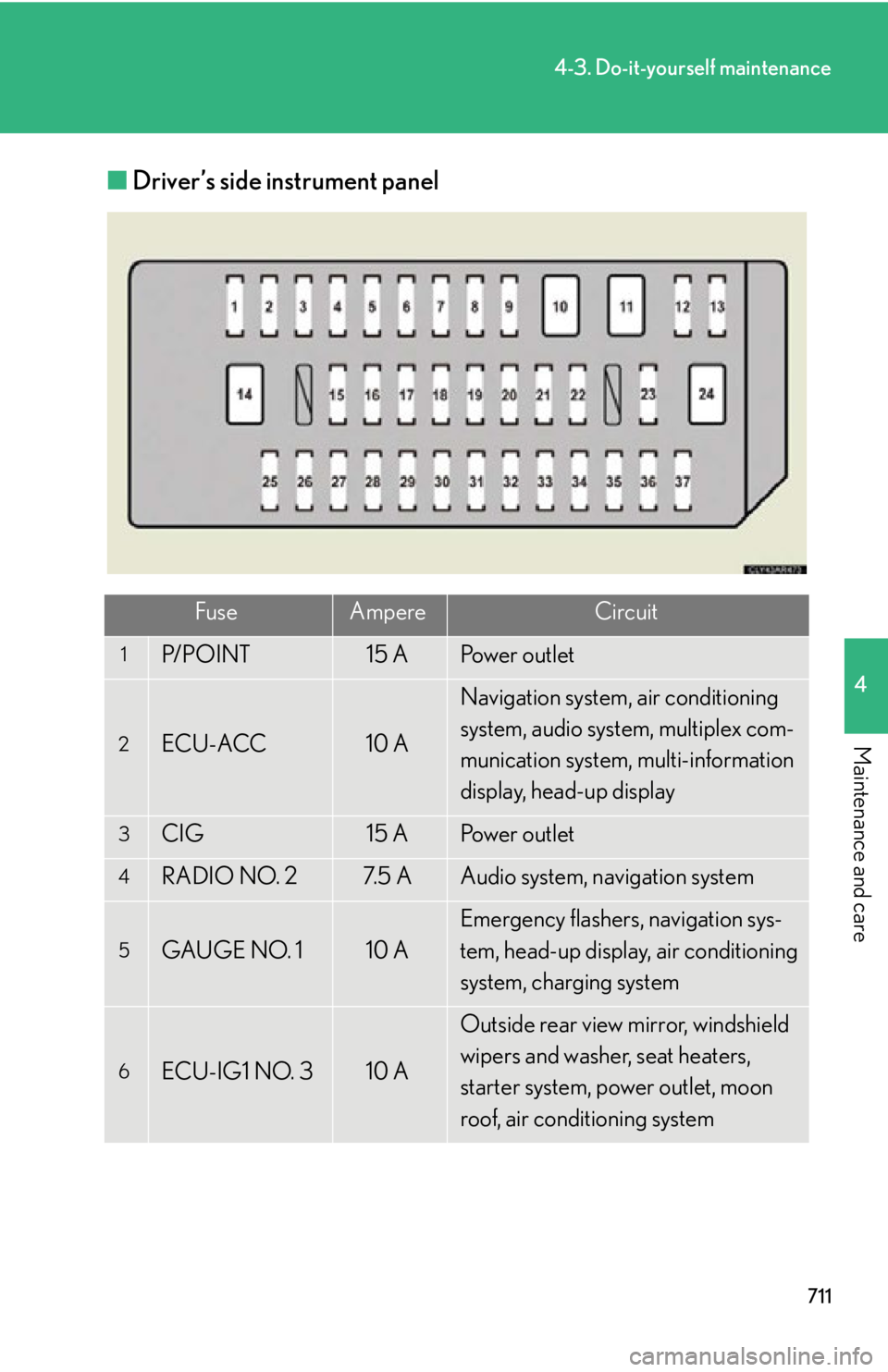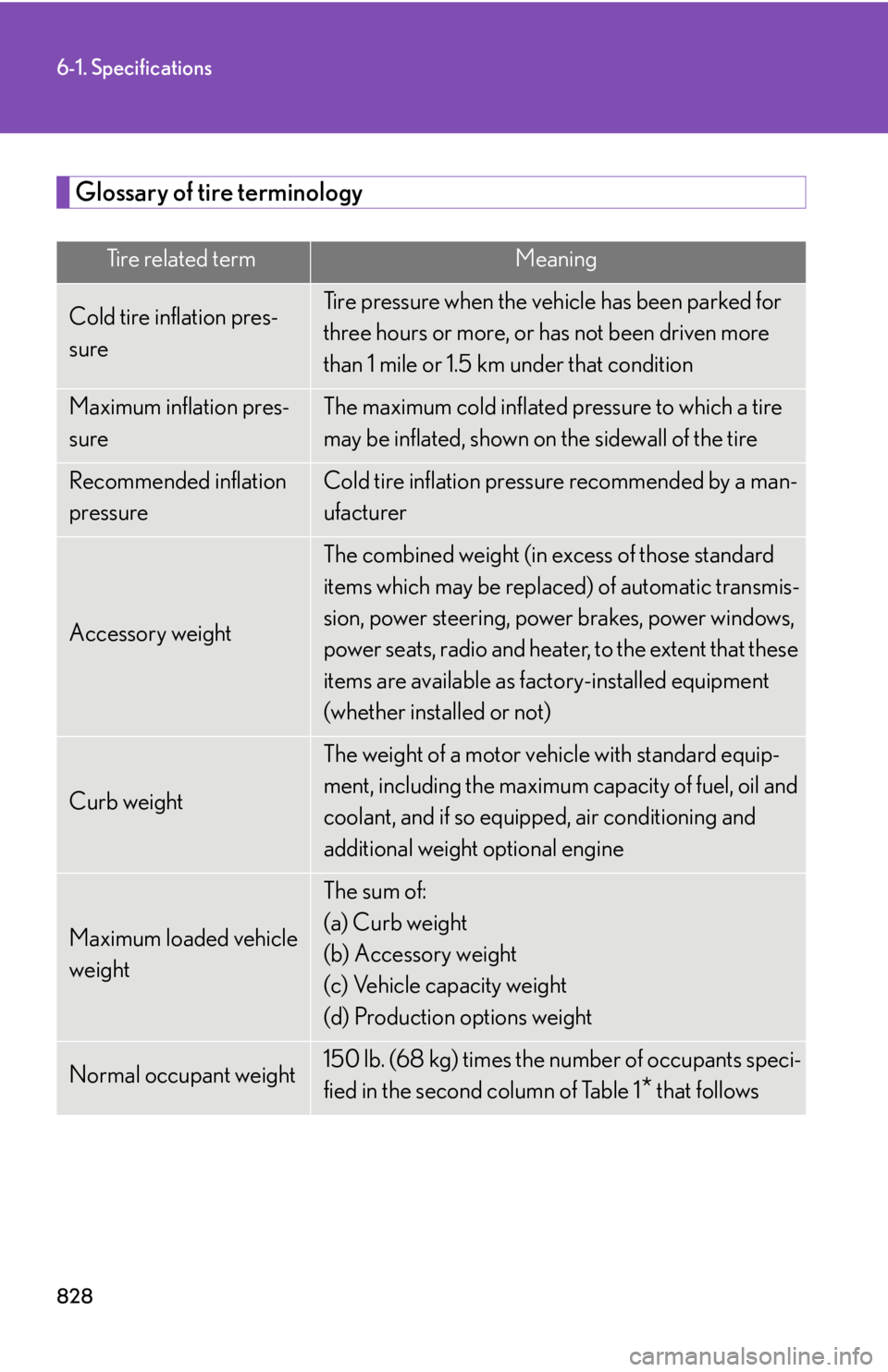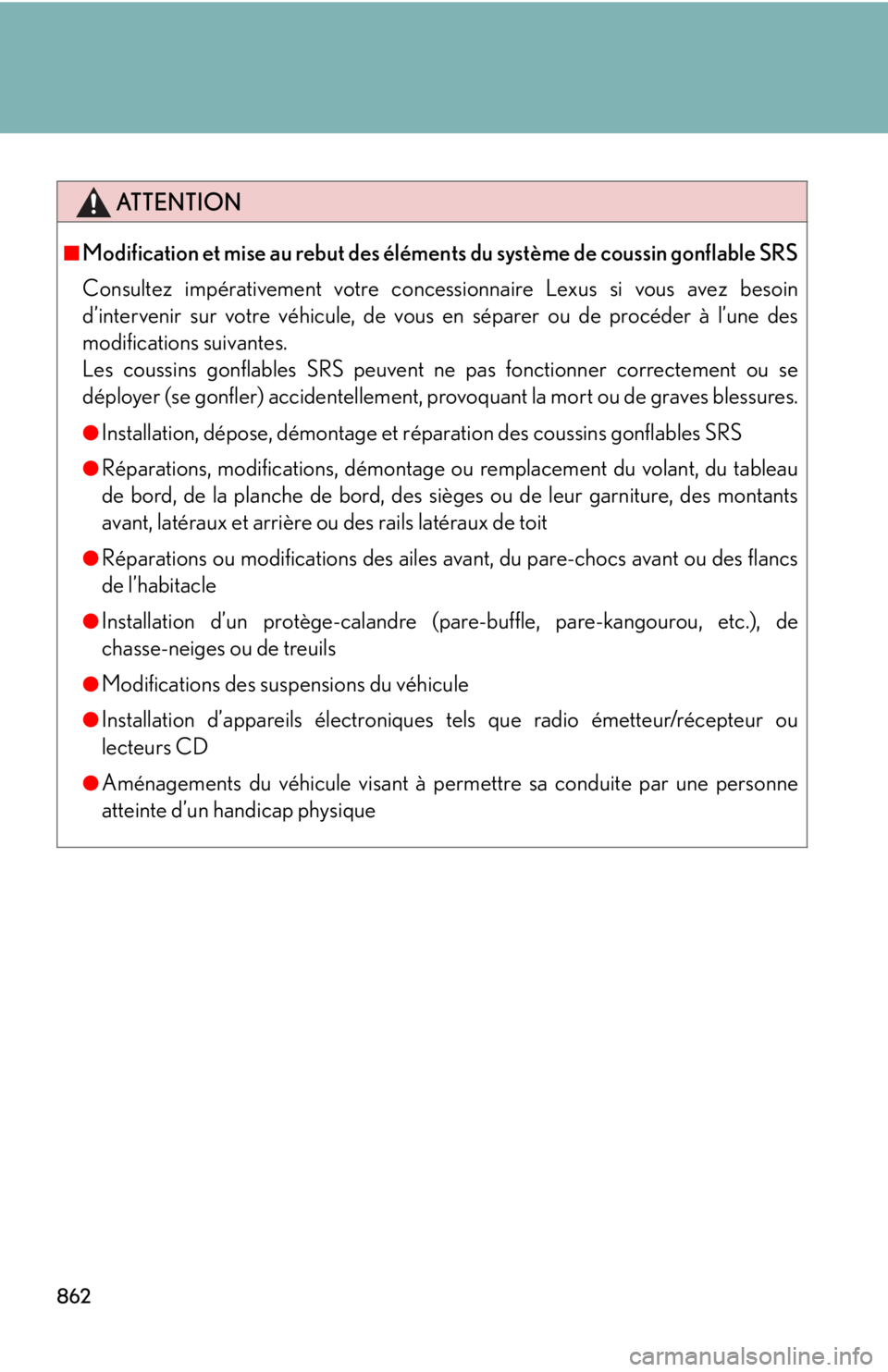2015 LEXUS RX350 radio
[x] Cancel search: radioPage 647 of 886

6473-7. Other interior features
3
Interior features Safety information for Safety Connect
Important! Read this information before using Safety Connect.
■ Exposure to radio frequency signals
The Safety Connect sy stem installed in your vehicle is a low-power
radio transmitter and receiver. It receives and also sends out radio fre-
quency (RF) signals.
In August 1996, the Federal Communications Commission (FCC)
adopted RF exposure guidelines with safety levels fo r mobile wireless
phones. Those guidelines are consistent with th e safety standards pre-
viously set by the following U.S. and international standards bodies.
● ANSI (American National Standards Institute) C95.1 [1992]
● NCRP (National Council on Radiation Protection and Measure-
ment) Report 86 [1986]
● ICNIRP (International Commission on Non-Ionizing Radiation Pro-
tection) [1996]
Those standards were based on co mprehensive and periodic evalua-
tions of the relevant scientific literature. Over 120 scientists, engineers,
and physicians from universities, an d government health agencies and
industries reviewed the available body of research to develop the
ANSI Standard (C95.1).
The design of Safety Connect co mplies with the FCC guidelines in
addition to those standards.
Page 690 of 886

6904-3. Do-it-yourself maintenance
■
Certification for tire pressure warning system
TPMS Transmitter FCC ID: PAXPMV107J
For vehicles sold in the U.S.A.
NOTE:
This device complies with part 15 of the FCC Rules. Operation is subject to the fol-
lowing two conditions: (1) This device may not cause harmful interference, and (2)
this device must accept any interference received, including interference that may
cause undesired operation.
FCC WARNING:
Changes or modifications not expressly approved by the party responsible for
compliance could void the user’s authority to operate the equipment.
For vehicles sold in Canada
NOTE:
Operation is subject to the following two conditions: (1) this device may not cause
interference, and (2) this device must a ccept any interference, including interfer-
ence that may cause undesired operation of the device.
L’utilisation de ce dispositif est autori sée seulement aux deux conditions suivantes:
(1) il ne doit pas produire de brouillage, et (2) l’utilisateur du dispositif doit être prêt
à accepter tout brouillage radioélectrique reçu, même si ce brouillage est
susceptible de compromettre le fonctionnement du dispositif.
TPMS Receiver FCC ID: HYQ13BCX
NOTE:
This device complies with part 15 of the FCC Rules. Operation is subject to the fol-
lowing two conditions: (1) This device may not cause harmful interference, and (2)
this device must accept any interference received, including interference that may
cause undesired operation.
FCC WARNING:
Changes or modifications not expressly approved by the party responsible for
compliance could void the user’s authority to operate the equipment.
Page 707 of 886

7074-3. Do-it-yourself maintenance
4
Maintenance and care 13
EPS 60 A Electric power steering system
14
ALT 140 A IG1 MAIN, TOWING BATT,
DEICER, TOWING, STOP, RDI FAN
NO. 1, FILTER, RR DEF, AIR SUS,
HEATER, ABS NO. 2, H-LP CLN,
PBD, ECU-IG1 NO. 1, ECU-IG1 NO.
3, GAUGE NO. 1, ECU-IG1 NO. 2,
EPS, FR WIP, RR WIP, FR WASH, RR
WASH, RH S-HTR, LH S-HTR, TAIL,
PANEL, D/L ALT B, FR FOG, FR
DOOR, FL DOOR, RR DOOR, RL
DOOR, PSB, P-SEAT LH, P-SEAT
RH, TI&TE, FUEL OPN, DR LOCK,
O B D, R R F O G, S / R O O F, 4 W D,
INVERTER, ECU-ACC, P/POINT,
CIG, RADIO NO. 215
AMP1 30 A Audio system16
EFI MAIN 30 A Multiport fuel injection system/
sequential multiport fuel injection sys-
tem, electronic controlled transmis-
sion, EFI NO. 1, EFI NO. 2, F/PMP17
AMP2 30 A Audio system18
IG2 MAIN 30 A IGN, GAUGE NO. 2, ECU IG 219
IP J/B 25 A Power door lock system20
STR LOCK 20 A Starter system
21
RAD NO. 3 15 A Meters and gauges, navigation sys-
tem, audio system
22
HAZ 15 A Emergency flashersFuse Ampere Circuit
Page 711 of 886

7114-3. Do-it-yourself maintenance
4
Maintenance and care ■ Driver’s side instrument panel
Fuse Ampere Circuit1
P/ P O I N T 15 A Po w e r o u t l e t2
ECU-ACC 10 A Navigation system, air conditioning
system, audio system, multiplex com-
munication system, multi-information
display, head-up display3
CIG 15 A Po w e r o u t l e t4
RADIO NO. 2 7. 5 A Audio system, navigation system5
GAUGE NO. 1 10 A Emergency flashers, navigation sys-
tem, head-up display, air conditioning
system, charging system
6
ECU-IG1 NO. 3 10 A Outside rear view mirror, windshield
wipers and washer, seat heaters,
starter system, power outlet, moon
roof, air conditioning system
Page 750 of 886

7505-2. Steps to take in an emergency
■
The tire pressure warning light may come on due to natural causes
The tire pressure warning light may come on due to natural causes such as natural
air leaks and tire inflation pressure chan ges caused by temperature. In this case,
adjusting the tire inflation pressure will turn off the warning light (after a few min-
utes).■
When a tire is replaced with a spare tire
Vehicles with a compact spare tire
The compact spare tire is not equipped with a tire pressure warning valve and trans-
mitter. If a tire goes flat, the tire pressure warning light will not turn off even though
the flat tire has been replaced with the spare tire. Replace the spare tire with the
repaired tire and adjust the tire inflatio n pressure. The tire pressure warning light
will go off after a few minutes.
Vehicles with a full-size spare tire
The spare tire is also equipped with the tire pressure warning valve and transmitter.
The tire pressure warning light will turn on if the tire inflation pressure of the spare
tire is low. If a tire goes flat, even though the flat tire is replaced with the spare tire,
the tire pressure warning light does not turn off. Replace the spare tire with the
repaired tire and adjust to the proper tire inflation pressure. The tire pressure warn-
ing light will turn off after a few minutes.■
If the tire pressure warning system is not functioning
The tire pressure warning system will be disabled in the following conditions:
(When the condition becomes normal, the system will work properly.) ●
If tires not equipped with tire pressure warning valves and transmitters are used●
If the ID code on the tire pressure warning valves and transmitters is not regis-
tered in the tire pressure warning computer●
If the tire inflation pressure is 73 psi (500 kPa, 5.1 kgf/cm 2
or bar) or higher
The tire pressure warning system may be disabled in the following conditions:
(When the condition becomes normal, the system will work properly.)
●
If electronic devices or facilities using similar radio wave frequencies are nearby
●
If a radio set at similar frequencies is in use in the vehicle
●
If a window tint that affects the radio wave signals is installed
●
If there is a lot of snow or ice on the vehicle, in particular around the wheels or
wheel housings
Page 751 of 886

5
When trouble arises
7515-2. Steps to take in an emergency
●
If non-genuine Lexus wheels are used (Even if you use Lexus wheels, the tire
pressure warning system may not work properly with some types of tires.)●
If tire chains are used●
Vehicles with a full-size spare tire: If the spare tire is in a location subject to poor
radio wave signal reception●
Vehicles with a full-size spare tire: If a large metallic object which can interfere
with signal reception is pu t in the luggage compartment■
If the tire pressure warning light freque ntly comes on after blinking for 1 minute
If the tire pressure warning light frequently comes on after blinking for 1 minute
when the “ENGINE START STOP” switch is turned to IGNITION ON mode, have
it checked by your Lexus dealer.■
Customization
The vehicle speed linked seat belt reminder buzzer can be disabled.
(Customizable features P. 8 3 4 )
CAUTION■
When the electric power steering system warning light comes on
The steering wheel may become extremely heavy.
If the steering wheel becomes heavier than usual when operating, hold firmly and
operate using more force than usual.■
If the tire pressure warning light comes on
Be sure to observe the following precautions. Failure to do so could cause loss of
vehicle control and result in death or serious injury. ●
Stop your vehicle in a safe place as soon as possible. Adjust the tire inflation pres-
sure immediately.●
If the tire pressure warning light comes on even after tire inflation pressure adjust-
ment, it is probable that you have a flat tire. Check the tires. If a tire is flat, change
it with the spare tire and have the flat tire repaired by the nearest Lexus dealer.
●
Avoid abrupt maneuvering and braking. If the vehicle tires deteriorate, you could
lose control of the steering wheel or the brakes.
■
If a blowout or sudden air leakage should occur
The tire pressure warning system may not activate immediately.
Page 830 of 886

8286-1. Specifications
Glossary of tire terminology Tire related term Meaning
Cold tire inflation pres-
sure Tire pressure when the vehicle has been parked for
three hours or more, or has not been driven more
than 1 mile or 1.5 km under that condition
Maximum inflation pres-
sure The maximum cold inflated pressure to which a tire
may be inflated, shown on the sidewall of the tire
Recommended inflation
pressure Cold tire inflation pressure recommended by a man-
ufacturer
Accessory weight The combined weight (in excess of those standard
items which may be replaced) of automatic transmis-
sion, power steering, power brakes, power windows,
power seats, radio and heater, to the extent that these
items are available as factory-installed equipment
(whether installed or not)
Curb weight The weight of a motor vehicle with standard equip-
ment, including the maximum capacity of fuel, oil and
coolant, and if so equipp ed, air conditioning and
additional weight optional engine
Maximum loaded vehicle
weight The sum of:
(a) Curb weight
(b) Accessory weight
(c) Vehicle capacity weight
(d) Production options weight
Normal occupant weight 150 lb. (68 kg) times the number of occupants speci-
fied in the second column of Table 1
* that follows
Page 864 of 886

862 ATTENTION■
Modification et mise au rebut des éléments du système de coussin gonflable SRS
Consultez impérativement votre concessionnaire Lexus si vous avez besoin
d’intervenir sur votre véhicule, de vous en séparer ou de procéder à l’une des
modifications suivantes.
Les coussins gonflables SRS peuvent ne pas fonctionner correctement ou se
déployer (se gonfler) accidentellement, provoquant la mort ou de graves blessures. ●
Installation, dépose, démontage et réparation des coussins gonflables SRS●
Réparations, modifications, démontage ou remplacement du volant, du tableau
de bord, de la planche de bord, des sièges ou de leur garniture, des montants
avant, latéraux et arrière ou des rails latéraux de toit●
Réparations ou modifications des ailes avant, du pare-chocs avant ou des flancs
de l’habitacle●
Installation d’un protège-calandre (pare-buffle, pare-kangourou, etc.), de
chasse-neiges ou de treuils●
Modifications des suspensions du véhicule●
Installation d’appareils électroniques tels que radio émetteur/récepteur ou
lecteurs CD●
Aménagements du véhicule visant à permettre sa conduite par une personne
atteinte d’un handicap physique